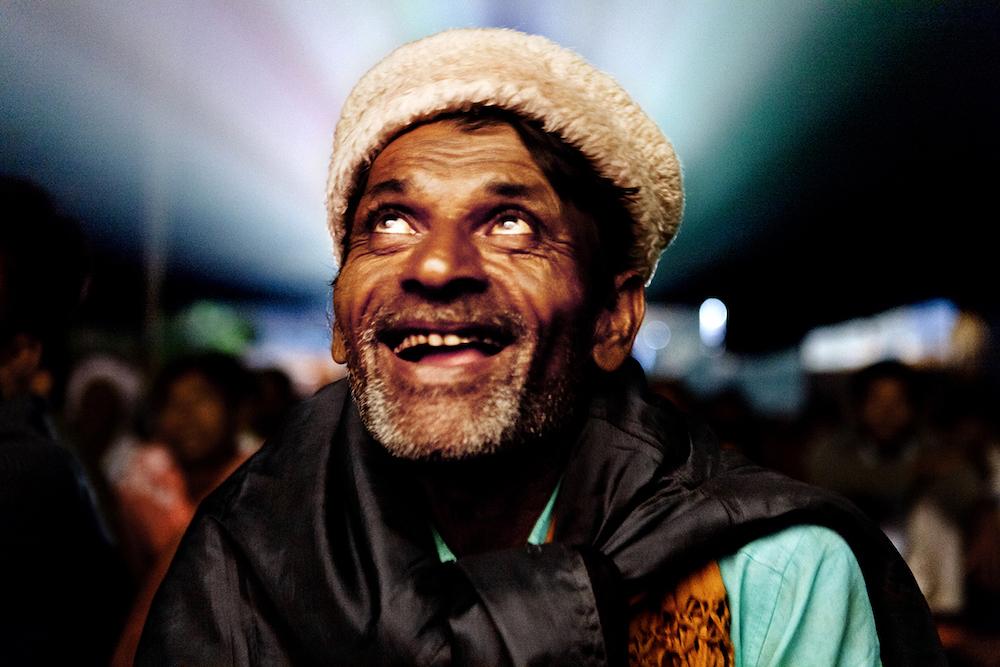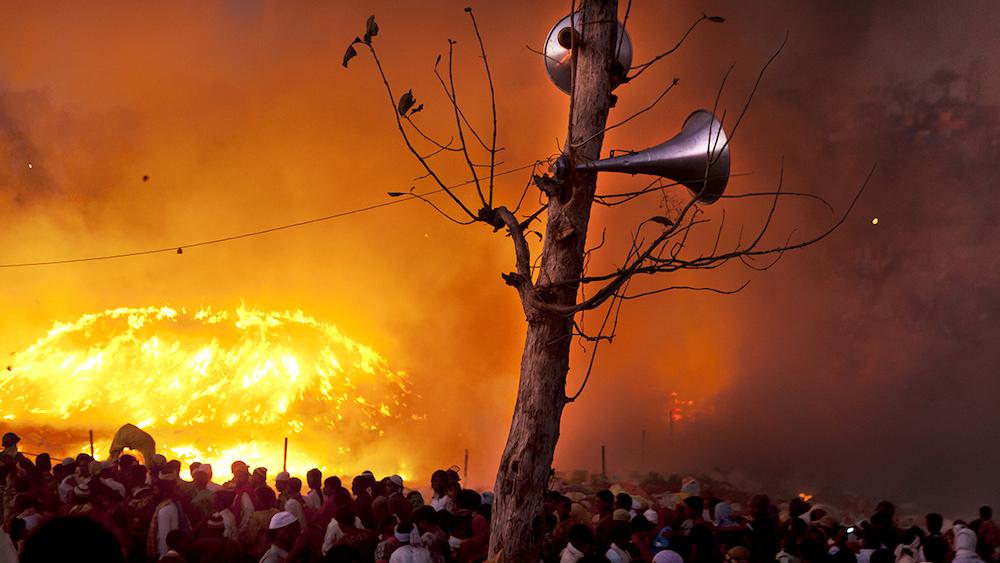Still/Moving: The Spectacle of Film in The Cinema Travellers

Travelling Cinema Projection Cabin.
“Cinema as a text only comes into being with audience reception. No film is complete unto itself…”
- Filmmaker and photographer Amit Madheshiya, in an interview with Amrita Chakravarty and Ketaki Varma, Critical Collective, 2020.
The opening sequence of Amit Madheshiya and Shirley Abraham’s award-winning film The Cinema Travellers (2016) is electric. We see a man at work attempting to screen a film in what appears to be a tent in rural India. But the projectionist is confronted with some unexpected technical glitches. As the impatient and excited audience throngs the tent, he races against time to overcome these hurdles. With a sigh of relief, mopping sweat from his brow, he manages to bring the film to life in the nick of time. At this point, we would expect to see the adrenaline-filled aftermath of this high-drama sequence in the form of, perhaps, the classic film-within-film or by continuing to focus on the projectionist, fixing him as the protagonist of this story. Instead, the filmmakers subvert expectations by presenting a series of still frames—close-up shots of individual audience members, transfixed by the moving images flashing before them.

Patrons at a Travelling Tent Cinema Screening.
This shift in aesthetic—captured within a matter of minutes—points at several ideas that are at the heart of the film, and of Madheshiya and Abraham’s journey with this project. At one level, The Cinema Travellers is a documentary about the touring tent-cinemas of Maharashtra. It offers itself as an ode to alternative modes of film exhibition holding out against a rapidly-changing cultural and technological landscape. But the film goes far beyond this basic premise, locating cinema within a larger ecology of artistic and social practices. It compels us to understand the spectacle of film beyond what we see on screen.

Patrons at a Travelling Tent Cinema Screening.
The juxtaposition of still and moving image at the beginning of The Cinema Travellers signals the origins of the documentary, which began as a photographic project before it took shape as a film. This sequence draws our attention to the inextricable link between a film and its audience. One is meaningless without the other. By showing us magnified portraits of film spectators as they experience the pleasure of watching a film, the filmmakers are firmly placing the audience at the centre of the cinematic narrative—equal in relevance and status to the film text itself. “Watching people watch cinema actually becomes a gateway to the monumentality of the moving image. We do not see the moving image, but we can see it’s hypnotic effect,” Madheshiya explains in an earlier interview. The feeling of wonder one sees on the spectators’ faces shines light on the iconic status of cinema—particularly in India—and its arguably unparalleled ability to thrill.

Jatra Where These Cinemas Pitched Their Tents.
At its core, The Cinema Travellers is a meditation on the layered essence of an art form like film. It does not reduce film practice to simply a technology, business or text. Instead, it translates the singular film object into multiple, overlapping and interconnected identities. It taps into the lived experience of cinema, its traditions, impact, and the people and places that inhabit its ecology.
All images from The Cinema Travellers by Amit Madheshiya and Shirley Abraham. Images courtesy and copyright Amit Madheshiya.
To know more about The Cinema Travellers photography exhibition at GallerySKE in 2017, click here.




